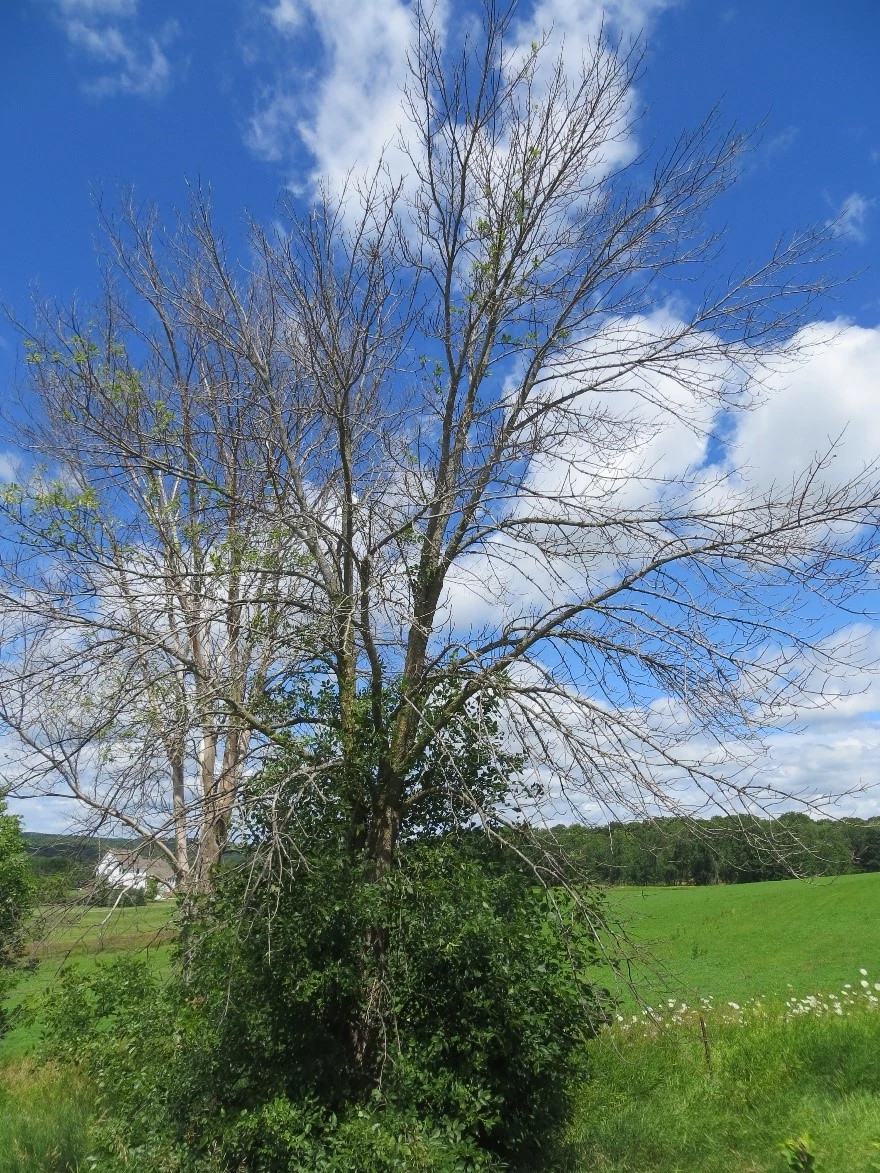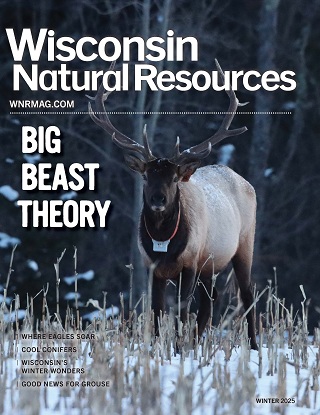Contact: Northern Oconto County Contact: Steve Kaufman, DNR forester Stephen.Kaufman@wisconsin.gov or 920-360-1290
Southern Oconto County Contact: Chris Duncan, DNR forester Christopher.Duncan@wisconsin.gov or 920-604-1533
Shawano County Contact: Tim James, DNR forester
Timothy.James@wisconsin.gov or 715-701-8018
Emerald Ash Borer Confirmed In Oconto And Shawano Counties
 Signs of emerald ash borer infestation include ash trees dying from the top down and branches sprouting low on the trunk of the tree, as shown in this picture.
Photo credit: Wisconsin DNR
Signs of emerald ash borer infestation include ash trees dying from the top down and branches sprouting low on the trunk of the tree, as shown in this picture.
Photo credit: Wisconsin DNR
LITTLE SUAMICO/SHAWANO, Wis. – Wisconsin Department of Natural Resources (DNR) forestry staff have confirmed the presence of emerald ash borer (EAB) in the Town of Little Suamico in Oconto County and the city of Shawano in Shawano County. Alex Feltmeyer, DNR forest health specialist, identified the first positive identification of EAB in both counties which were later confirmed by DATCP. Feltmeyer estimates EAB was present at both locations for at least 3-4 years.
Emerald ash borer kills all varieties of ash trees (white ash, green ash and black ash) but is not known to affect any other Wisconsin tree species. More than 99% of Wisconsin’s ash trees are expected to die. Once infested, ash trees generally die in 4-6 years. To make matters worse, prolonged wetness, including record rainfall in 2019, has already killed ash trees growing in swamps.
Woodpecker damage, thinning of the tree crown from the top, 1/8-inch D-shaped exit holes, and branches sprouting low on the trunk are all signs of EAB infestation.
Oconto County and Shawano County woodland owners who own 10 or more wooded acres are encouraged to meet with their local DNR forester. Visit My Wisconsin Woods to request your free property visit.
EAB was discovered in the city of Green Bay in 2009 and more recently in several locations in Marinette County in 2017. Citizens can help slow the spread of EAB and other invasive insects and diseases that kill trees by not moving firewood.
If yard trees are close to houses or garages, it is best to plan for removal or protection now. Trees on private property can be protected through an annual or biannual application of systemic insecticides.
For questions on residential trees, homeowners are encouraged to contact a certified arborist at waa-isa.org.
For more information on EAB, visit the DNR's website.

